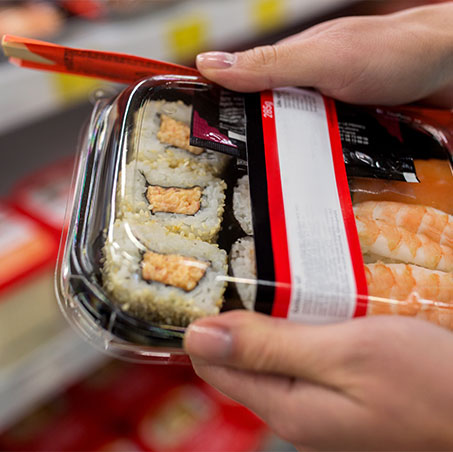Understanding inspection in Convenience Food applications
18 Mar 2020

Today the most successful retailers need to offer a variety of cuisines and flavors to fulfill the desire for ethic foods and artisan local produce.
Convenience Food is not just about lunchtime, but includes grab-and-go breakfasts, quick snacks and meal-time fresh and frozen solutions. Whatever the time of the day, consumers are typically becoming more discerning wanting premium taste and quality, with raised expectations of food flavor and format. There is also the added competition from quick service restaurants and the fast food service delivery, with which ‘Ready to Eat’ food is competing. This means the quality must strive to be more restaurant standard to meet consumer expectations.
How Convenience Food product manufacturing is challenging
Whilst Convenience Food is a growing market, it comes with production food safety challenges including:
- Early Stage Contamination - At the earlier stages a metal contamination might occur, for example, from mixing ingredients or slicing through meat chunks. Often vegetables go through a metal washing machine and other food processing equipment to clean, core, trim and cut, and then go through vibrating screens to size sort – all presenting a risk of tiny metal fragments entering the production chain. Also, for vegetable ingredients that have been harvested, stones might enter the production process at this early stage and need to be removed.
- Preparation Stage Contamination - Later down the line is a further risk of introducing contamination, from preparing anything from a granola pot to slicing vegetables for a snack pot or salad topping. Contaminants could include a metal piece or plastic tie wrap that has broken off an item of equipment, or any part of the packaging itself.
- Foiled Packaging - Metalized film or aluminium foil is a good choice to maintain freshness and protect the quality of products. But metalized packaging is not always compatible with conventional metal detectors and so it is unlikely to meet retailer and industry food safety requirements. In these instances, the use of an X-ray is likely to be more viable.
- High Salt Content - Many 'Ready to Eat' products, have a high salt content (e.g. due to containing a sauce), which can produce a large product signal, saturating the metal detector head and producing a false reading. Care needs to be taken to set up a metal detector to overcome the high presence of salt and eliminate false readings, or alternatively opting for an X-ray inspection solution.
- Product Configuration - With some Convenience Food products there are sometimes different components such as sauce sachets making up the final product. With an X-ray system, product integrity can be checked to ensure the final packaged product is correct, plus volume of content can be checked.
Convenience Food commercial challenges
By the nature of this food sector, it is time sensitive to ship product to the end retailer as soon as possible to maintain freshness and to avoid problems with food spoilage. Also, production lines handling high-processed foods tend to frequently change what the line is producing, and so easy cleaning and rapid product switching is a necessity.
Loma has worked within the food industry for over 50 years, and our teams understand the modern-day obstacles faced by many Convenience Food producers. Loma’s inspection systems are often designed to meet the specific needs of chilled, frozen, baked or raw Convenience Foods.
Specifically addressing the challenges experienced by producers of appetizers and 'Ready to Eat' products, where high care factory conditions are becoming the norm, Loma’s latest RUN-WET® systems have been designed to improve cleaning efficiencies and equipment robustness. Not only can they withstand high-temperature, high-pressure harsh washdown cleaning regimes, they are engineered around many sanitary and hygienic design principles. This ultimately helps to reduce the potential for bacterial cross contamination and improve food safety.
Whatever Convenience Food, 'Ready to Eat', or 'Food To Go' requirement you may have, Loma can work with you to implement the right Check & Detect inspection solution .
Source
https://www.thegrocer.co.uk/trend-reports/food-to-go-get-ready-for-the-counter-revolution/572874.article
https://packagingeurope.com/metal-detectors-for-britains-thriving-food-on-the-go-smes/
